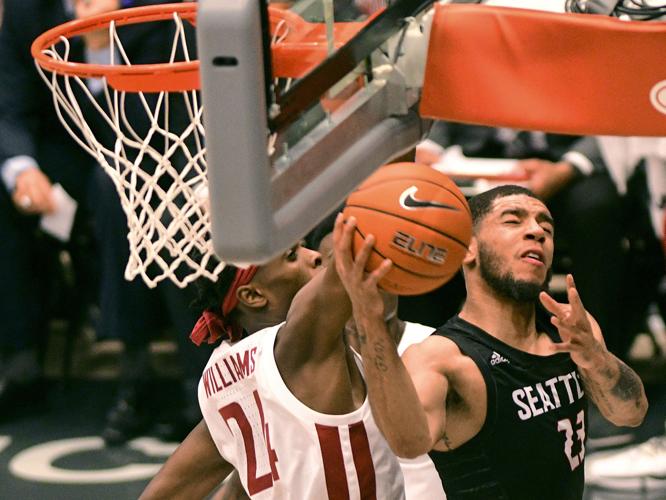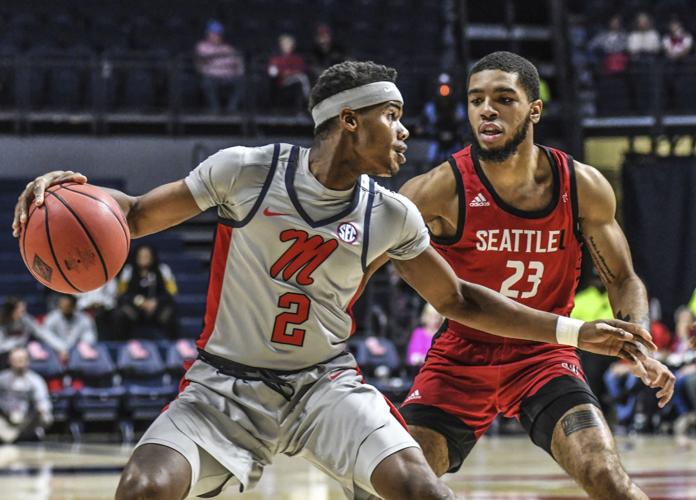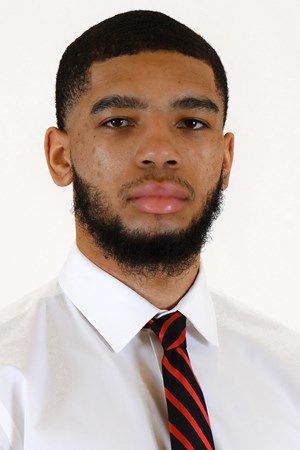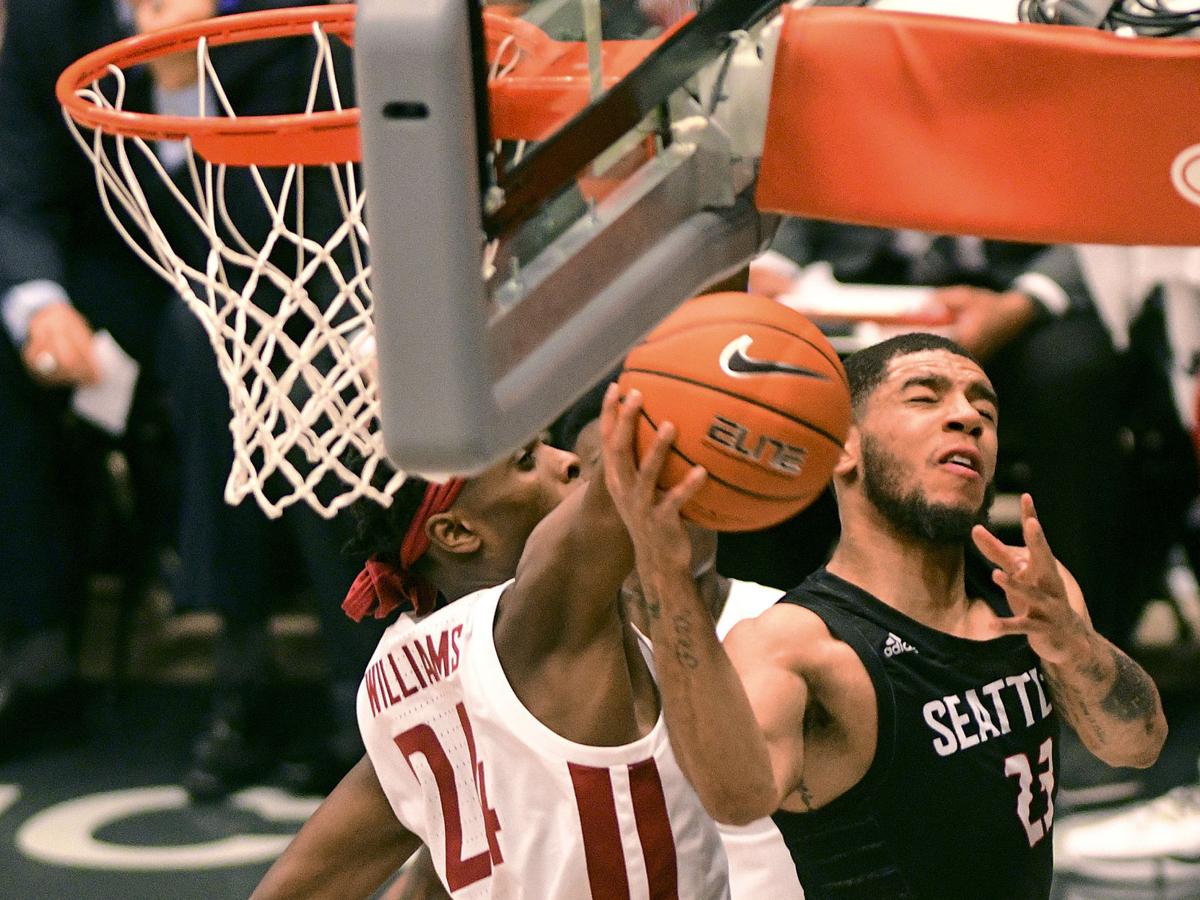After leading the Western Athletic Conference in scoring while averaging 36 minutes at Seattle University last season, guard Terrell Brown listened over the phone Sunday while Arizona coach Sean Miller essentially told him he’d have to start over at Arizona.
No guaranteed starting role, no certain minutes, no unlimited shots, nothing.
Brown committed to the Wildcats anyway, choosing Arizona on Monday over San Diego State, Arkansas and a number of other high-major schools who quickly pursued him once the all-WAC first-teamer announced last week he was considering a grad transfer.
But Brown’s choice of a place with no guarantees is not surprising considering his career history.
A 6-foot-1, 175-pound combo guard, Brown has never been promised anything on the court ever, really.
At Seattle’s Garfield High School, he played a limited role on teams with high-major talents such as Jaylen Nowell and Daejon Davis, receiving only Division II offers when he graduated. He played a season of junior college ball, and had to walk-on just to get a spot at Seattle U until he quickly proved himself the Redhawks’ best player.
He was a late bloomer and, for a long while, buried deep in the soil.
“You could say some of it was high school — we had seven Division I players on my team,” Brown told the Star on Monday from Seattle. “It was just, you know, crowded.”
Same went for his club-ball experience, where Brown played a limited role with the prestigious Seattle Rotary program.
Good players all around him, and only one ball.

Terrell Brown, right, wore No. 23 for Seattle U, but will have the No. 31 uniform when he plays for UA this year. That’s the same number his godfather, Jason Terry, wore with the Wildcats in the late 1990s.
Brown adapted. He said he learned to play different roles wherever needed — becoming a defensive specialist, a point guard and, during his one season at Shoreline Community College north of Seattle, a high-level scorer.
But those who had played with him knew all along what he really was. Now a standout guard at Stanford, David retweeted Brown’s announcement last week that he was transferring and added one comment.
“Uh oh,” Davis tweeted, “Coaches, y’all better not sleep this time around.”
Brown’s departure from Garfield was only the first time that happened. Brown said he initially headed to Division II Western Oregon in 2016-17 but left after a few weeks because he said it didn’t seem like a good fit, then he took the year off.
In 2016-17, he enrolled at Shoreline and played one season, finding out quickly the team needed scoring. He responded by averaging 30 points a game, expanding his game in ways he hadn’t previously needed to.
“I played a lot of defense in high school — that was my role to lock up another team’s best player,” Brown said. “And then going to Shoreline, and even Seattle U, I also played defense but also my job was to score a lot of points.”
Brown’s one season at Shoreline went so well he decided not to spend two years of college eligibility there, so instead crammed a heavy academic load into the following summer so that he could get a two-year degree and be able to play Division I elsewhere.
But even then, Brown was not flooded with offers. So he paid his own way his first quarter at Seattle U before the school gave him a scholarship in the second quarter.
There was no guarantee then, either.
“There wasn’t a scholarship present for me at the time,’ Brown said. “It wasn’t for sure that, like ‘You’re going to get a scholarship and this and that.’ I basically just earned a scholarship.”
It was quickly clear he was deserving of one. In his first Seattle U season of 2018-19, Brown was twice named WAC player of the week, started 28 of 33 games and became an second-team all league pick.
Then this past season, after he poured in an average of 20.7 points, his market value finally blew up.
Not to be confused with a New Mexico State player of the same name, Brown knew how much just moments after tweeting last Thursday that he was considering a transfer.
Immediately, high-level programs such as Arizona, Washington, Oregon State, Texas Tech, BYU, Auburn and Wake Forest called. Brown said he ultimately considered Arizona, San Diego State and Arkansas the most, plus the option of returning to Seattle, but went with the first program that called and kept pursuing him heavily.
There were reasons to move quickly. Brown couldn’t visit any of the schools recruiting him this spring anyway, thanks to the coronavirus-prompted NCAA dead period, while Arizona has also been recruiting UNLV grad transfer guard Amauri Hardy.
The Wildcats were unlikely to take both guards for next season, so Terrell decided to be the one. He made his commitment shortly after UA’s Miller and associate head coach Jack Murphy went through a detailed PowerPoint presentation on Sunday morning over the phone.

Terrell Brown
“It was awesome,” Brown said. Miller “was honest from the beginning. Ever since then we’ve been in constant communication. He’s been, I would say, more genuine. He told me, ‘We’re losing seven guys. Nothing’s guaranteed because I want to win games.’ I completely understand, it’s about working hard and getting the job done.
“I’m a team player first. As long as the team wins, I’m happy. I’m gonna do whatever coach Miller needs me to do. If he needs five minutes, I’m coming in and playing the hardest five minutes ever.”
The truth is, though, Miller is likely to need Brown for a lot more than five minutes.
The Wildcats are losing guards Nico Mannion and Josh Green to the NBA Draft, along with senior wing Dylan Smith, while they also are bracing to again be without redshirt sophomore Brandon Williams, who missed this season after knee surgery.
That leaves Brown, Georgetown transfer James Akinjo and returning junior Jemarl Baker to split up the point guard and shooting guard duties for Arizona next year — with Williams to chip in if he stays healthy and sticks around. The Wildcats also have incoming wings in freshman Dalen Terry and Bennedict Mathurin, while they are likely to add another this spring.
Brown says he’s a point guard more than anything, averaging 4.9 assists per game last season, but he’s also proven himself a prolific scorer, driver and foul magnet at Seattle.
Brown shot 41.4% overall and just 29.1% from 3-point territory last season but took an average of 5.9 free throws per game and hit them at a 78.4% rate.
While Arizona won’t likely need his scoring numbers to be quite that high, a significant role of some sort appears likely.
That’s actually more than Brown is asking for. Just give him a uniform and he’ll take it from there.
“I’m always trying to prove myself, every time I step on the court,” Brown said. “With Seattle U, I was playing with so much of a chip on my shoulder, so much toughness. I knew how hard it was to get this far, and that’s something that will never leave me. That is who I am as a person now.”







